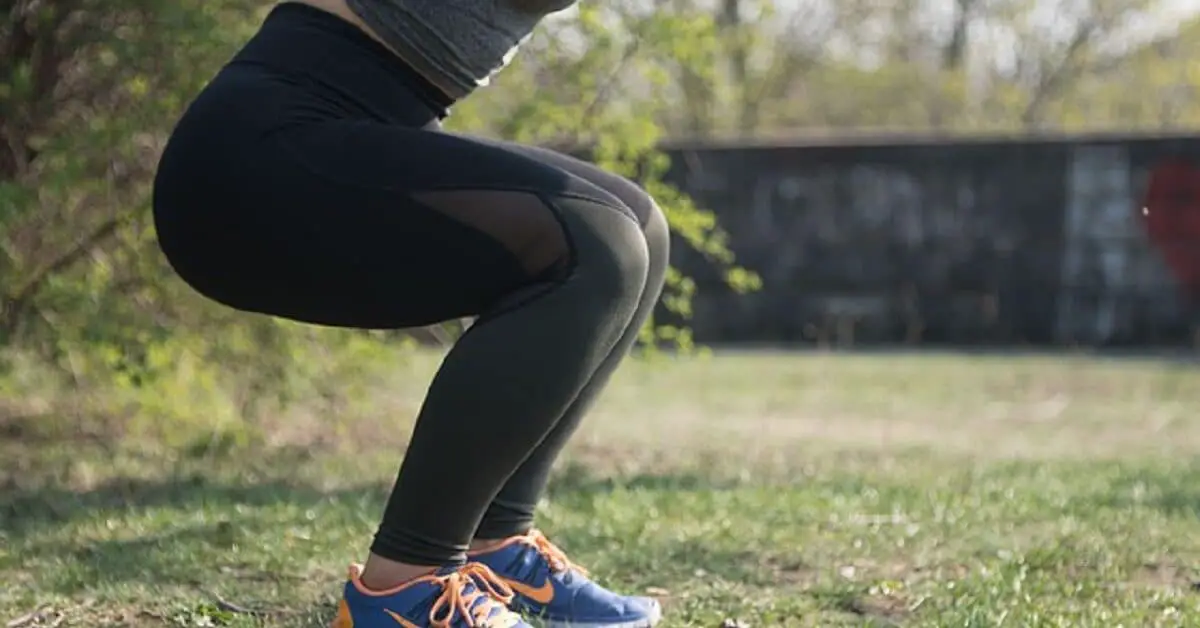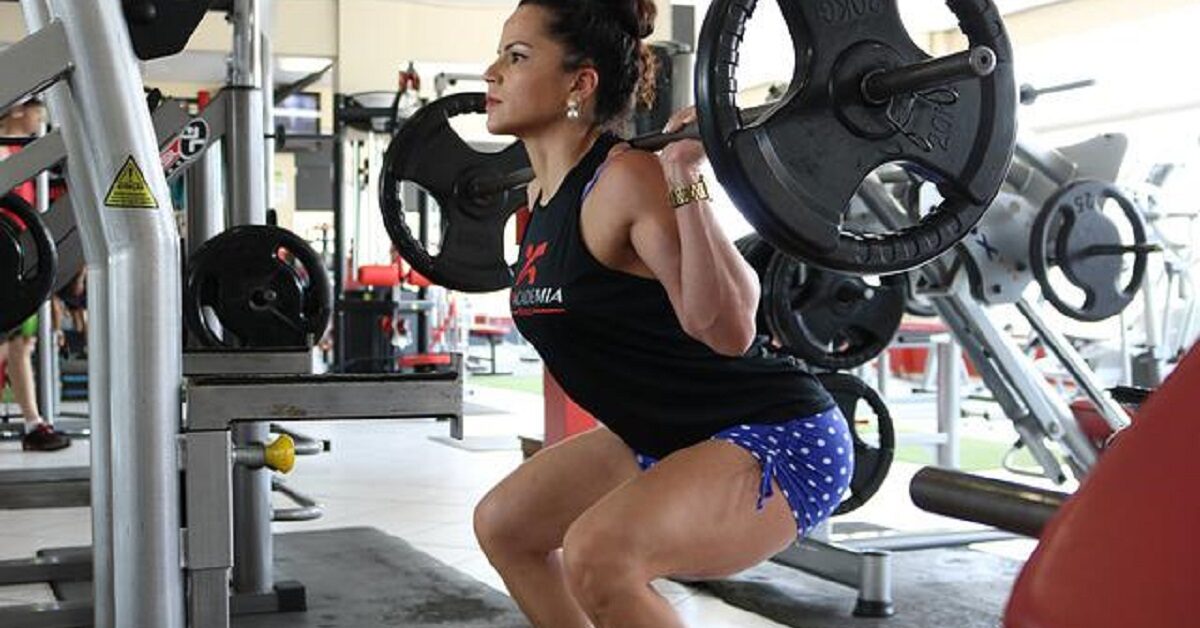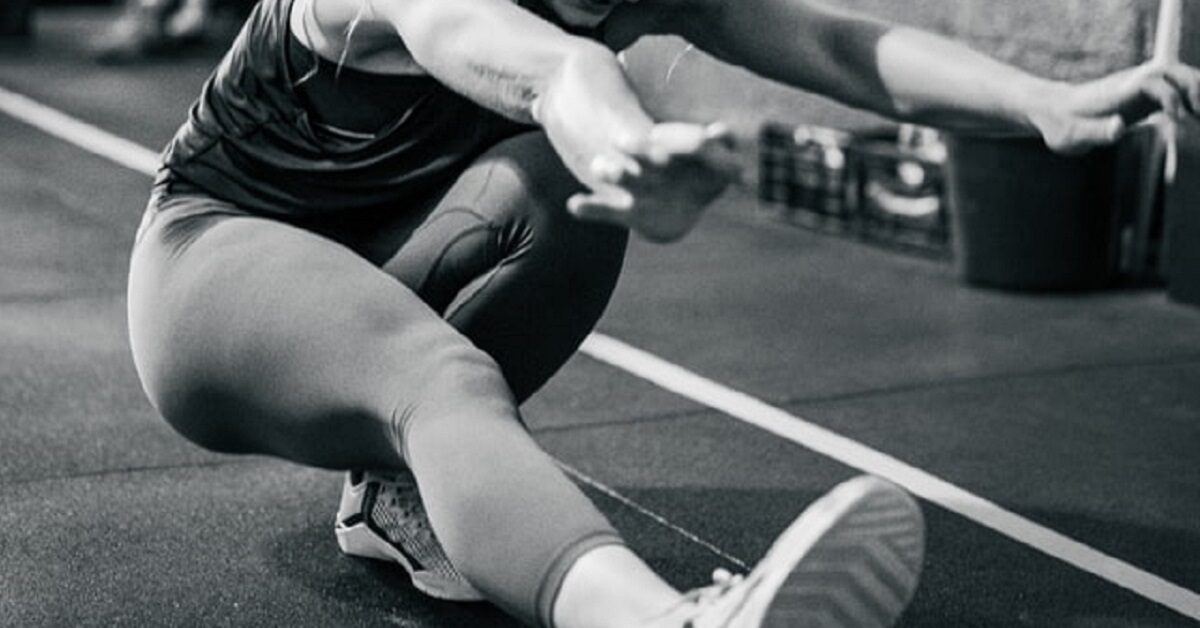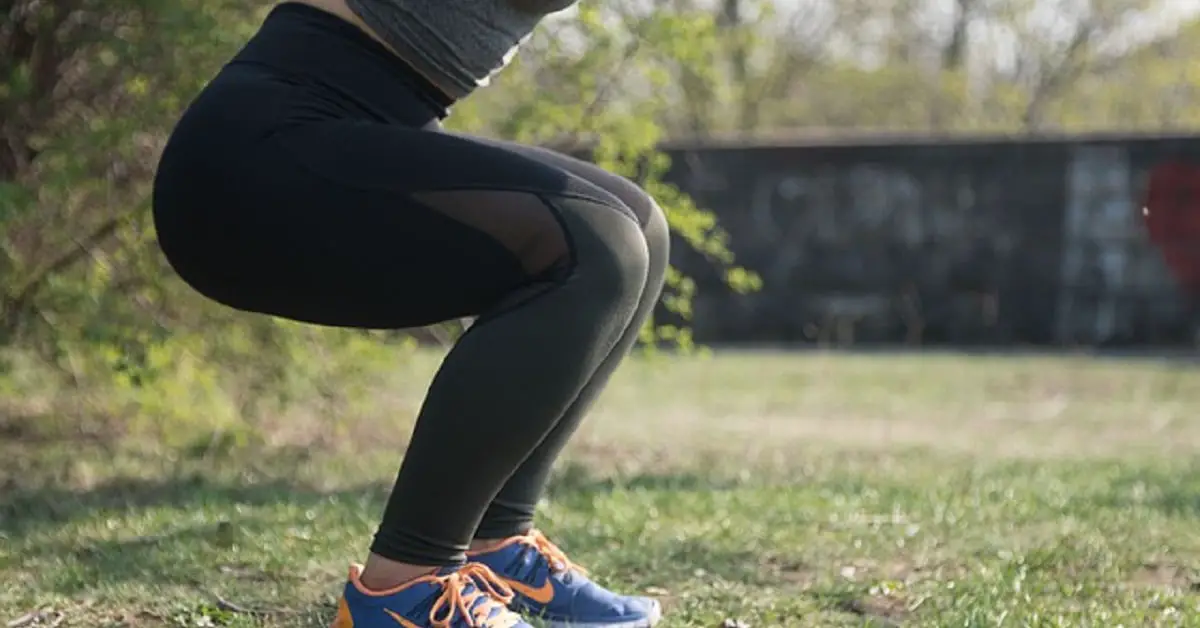
How many calories are burned by doing bodyweight or weighted squats depends on many factors, including age, sex, height, weight, lean body mass, duration, and intensity of activity.
We present Calories Burned Calculators (view our calculators here) that estimate your rate of energy expenditure while performing bodyweight and weighted squats (barbells and dumbells).
The calculators estimate calorie expenditure, taking into account your age, sex, height, body weight, lean mass, exercise intensity, and duration.
You may also get an estimate of the number of calories burned due to performing any number of bodyweight squat repititions.
We show you how to calculate calories burned yourself. You also learn how to calculate the weight loss associated with physical activity.
Shop (free shipping):
(View our collection of fitness trackers, calorie counters, activity monitor smart watches here – free shipping.)
Contents:
A note on calculated energy expenditure values
Calories Burned Calculator: Bodyweight squats
Calories Burned Calculator: Weighted squats
Squats build muscle strength and burn calories
How to calculate calorie expenditure: Metabolic Equivalent of Tasks (MET)
What is the MET value of squats?
How to calculate calories burned
How to calculate calories burned by 30 or 50 bodyweight squat reps
Weight loss due to physical activity
A note on calculated energy expenditure values
The calories burned values calculators generate are only rough estimates intended to give a general idea of the energy cost of physical activity. They also help you appreciate the relative effectiveness of different physical activities for burning calories.
The only reliably accurate way to estimate energy expenditure is through measurement methods such as:
- Direct and indirect calorimetry
- The doubly labeled water technique (DLW)
- Heart rate monitoring
- Pedometers
Calories Burned Calculator: Bodyweight squats
Enter your age, sex (gender), body weight, height, exercise duration, and intensity of activity (moderate or vigorous), and get an estimate of how many calories you burn by performing bodyweight squats.
Our calculator also takes the effects of high lean mass into account.
Athletic individuals and bodybuilders with high Body Mass Index (BMI) (view our BMI calculator here) may select an option that approximates their body fat percentage. Our calculator then estimates energy expenditure using BMR predicted by the Katch-McArdle formula as baseline.
The calculator also lets you estimate energy expended by performing any number of bodyweight squat repetitions. Thus, if you want to know how many calories 50 squat reps burn, enter the number, and our calculator does the math.
You also get an estimate of fat loss associated with calorie expenditure, Basal Metabolic Rate(BMR)/ Resting Metabolic Rate (RMR), resting oxygen consumption (ml/kg/min), and Corrected MET value for the physical activity.
If you are not familiar with these terms, you can learn more here.
[Note: Readers interested in calculating energy expenditure while performing weighted squats may scroll down to use our calories burned by weighted squats calculator. However, if you also want to calculate energy expenditure while peforming push-ups, you may use our calories burned by push-ups calculator.
We also have detailed instructions below for readers who want to learn how to do the calculations by themselves.]
Depending on workout intensity (moderate or vigorous), an average, healthy adult woman, standing 64 inches (162.56 cm) tall and weighing 60kg (132 lbs), burns between 4.0 to 8.4 calories per minute performing bodyweight squats.
An average, healthy adult male, standing 69 inches (175.26 cm) and weighing 78kg (172lbs), burns between 5.2 to 11.0 calories per minute.
Calories Burned Calculator: Weighted squats
Get an estimate of how many calories you burn by doing squats with weights, such as dumbbells and barbells (back squats and front squats).
Enter your age, gender, body weight, height, exercise duration, and intensity of activity (moderate or vigorous), and the calculator supplies the following information.
- Calories burned by doing squats with weights
- Basal Metabolic Rate (BMR)/Resting Metabolic Rate(RMR) measured in kcal/day
- Resting oxygen consumption (ml/kg/min)
- Corrected MET value of squats with weights (MET)
Our calculator also adjusts for the effects of lean mass on metabolic rates. If you are a bodybuilder with a high lean body mass and a high Body Mass Index (BMI) (calculate your BMI here), you may select an option from the drop-down menu that approximates your body fat percentage. Our calculator then estimates your energy expenditure using the BMR value predicted by the Katch-McArdle formula as your baseline metabolic rate.
You’d need an added weight of at least 50%-70% of your bodyweight to perform back squats or front squats properly.
Weighted squats are performed slower than bodyweight squats, with longer pauses between reps. Generally, you do only a few reps per set (2-7 reps) or a single repetition with heavier weights.
Since you may perform weighted squats with a wide range of weights and techniques, it is difficult to meaningfully capture the variability of the workout routines in a single algorithm designed to calculate calories burned per rep.
A calculator based exclusively on exercise intensity (directly related to added weight) and time under muscular tension appears to be the best approach.
Squats build muscle strength and burn calories

Squats target the lower body, back, and abdominal muscles. The muscles activated while performing squats include the leg, buttocks, lower back, and abdominal muscles. Performing squats helps improve lower body and core muscle strength, endurance, stamina, and balance.
The two types of squats are bodyweight squats and weighted quats.
You perform bodyweight squats using only your body weight as a source of resistance. You may also perform squats with weights, such as dumbbells, barbells, and kettlebells.
Weightlifters perform squats with weights (back squats and front squats) because they need to build lower body and core strength.
The first YouTube video (see below) shows how to perform bodyweight squats. The second shows how to perform squats with weights.
The muscles directly involved in doing/executing squats are:
- Quadriceps (front and sides thigh muscles)
- Hamstrings (muscle running along the back of the thighs)
- Gluteus muscles (muscles of the buttocks)
- Calf muscles (gastrocnemius and the soleus)
- Hip flexor muscles, including the psoas, rectus femoris, and sartorius muscles
- Adductor muscles (run from the femur to the pubic bone)
Squats performed with weights also activate muscles of the upper body, including the chest, shoulders, and arm (triceps and biceps) muscles.
When you perform squats vigorously, your heart and respiratory rates increase. You also burn calories. But if you’ve been wondering how many calories you burn by doing squats compared with other activities, here is everything you need to know.
How to calculate calories expenditure: Metabolic Equivalent of Tasks
The easiest way to calculate or estimate energy expenditure while performing squats is by using a formula that incorporates a multiplier factor representing the relative energy cost of squat exercises.
The relative energy cost of any activity is measured by its Metabolic Equivalent of Task (MET) value.
The MET value of a task compares the rate of energy expenditure while performing the task with the rate of energy expenditure while sitting still or quietly (Resting Metabolic Rate, RMR).
Sitting still is assigned a MET value of 1, and other tasks are assigned values that compare their energy cost with the reference task (sitting still). Thus, if a task is assigned a MET value of 10, it means that the rate at which you burn calories while performing the task is 10 times the rate of sitting still.
You can learn more about the Metabolic Equivalent of Tasks here.
The rate at which you burn calories while performing any physical activity depends on many factors, including your age, height, weight, the resistance you have to overcome to accomplish it, and the intensity of the effort you put into it.
For instance, a 16-year-old boy burns calories faster than a girl of the same age, while younger people expend energy at a faster rate than older people.
The rate of energy expenditure ascending a hill is higher than descending. The rate walking 5 km/hr is more than walking 3 km/hour. Walking your dog burns more calories than sleeping.
What is the MET value of squats?

The Compendium of Physical Activities lists standard MET values for various forms of calisthenics and weightlifting exercises under three levels of intensity: light effort, moderate effort, and vigorous effort.
Calisthenics includes exercises such as push-ups, pull-ups, sit-ups, lunges, abdominal crunches, and squats. Calisthenics exercises are bodyweight workouts that focus on developing strength, endurance, and flexibility of muscles.
The Compendium does not mention bodyweight squats as calisthenics. However, bodyweight squats are also calisthenics because they involve using your body weight to exercise large muscle groups.
Bodyweight squats will likely consume energy at a rate comparable with other forms of calisthenics, provided you don’t perform the exercise with added weights, such as dumbbells, barbells, and kettlebells.
Table 1 (see below) lists the MET values for calisthenics exercises performed with various levels of intensity or effort.
The Compendium also lists MET values for resistance training (weightlifting and bodybuilding) exercises, such as back and front squats, performed with moderate and vigorous levels of intensity.
We include the compendium codes for easy reference.
| Code | Physical Activity | Intensity/effort | Standard MET value |
| 02024 | Calisthenics | Light | 2.8 |
| 02022 | Calisthenics | Moderate | 3.8 |
| 02020 | Calisthenics | Vigorous | 8.0 |
| 02052 | Resistance training (weighted squats) | Slow | 5.0 |
| 02050 | Resistance training | Vigorous | 6.0 |
How to calculate calories burned

Standard MET values are estimated without accounting for the effects of age, sex, height, and weight.
Keep in mind that using MET values to calculate the calorie cost of physical activity yields values that are at best only rough estimates of actual values.
The most accurate way to determine calories burned while performing various activities is through direct and indirect calorimetry, doubly labeled water technique (DLW), heart rate monitoring, pedometers, and accelerometry.
The practical value of using mathematical formulas to estimate calorie expenditure is that they give you a rough idea of the relative effectiveness of different physical activities for burning calories.
Thus, we shall calculate calorie expenditure values associated with performing bodyweight squats using different MET values that represent various exercise intensity levels.
[Note that the same principles and methods apply to weighted squats.]
Comparing the values will help us gain an insight into the effects of different workout intensity levels on calories burned.
Example 1:
Calculate calories burned (using standard MET values) by a 35-year-old, 70kg, 5 feet 10 inches tall male performing bodyweight squats vigorously for 10 minutes.
The steps for solving the problem are listed below:
- Calories burned per minute = Standard MET x 3.5 ml/kg/min x (weight in kilograms)/200
- Standard MET of vigorous calisthenics = 8.0 (see table above)
- Thus, energy expenditure = 8.0 x 3.5 x 70/200 = 1960/200 = 9.8 calories per minute
- Calories burned in 10 minutes = 98 calories
[Note that this calculation takes into account only the body weight and intensity of physical activity.]
Example 2:
For comparison, we may calculate the number of calories burned by the same person performing bodyweight squats with a moderate effort for 10 minutes.
Calculate calories burned (using standard MET values) by a 35-year-old, 70kg, 5 feet 10 inches tall male performing bodyweight squats with moderate intensity for 10 minutes.
We list the steps for your convenience:
- Calories burned per minute= MET x 3.5 ml/kg/min x (weight in kilograms)/200
- Standard MET value of moderate calisthenics = 3.8
- Thus, calories burned = 3.8 x 3.5 x 70/200 = 931/200 = 4.655 calories per minute
- Energy expenditure in 10 minutes = 46.55 calories
Example 3:
We may also calculate calories burned performing squats with light intensity of effort for 10 minutes:
- Standard MET of light calisthenics = 2.8
- Calories per minute= MET x 3.5 ml/kg/min x (weight in kilograms)/200
- Energy consumed per minute = 2.8 x 3.5 x 70/200 = 686/200 = 3.43 calories per minute
- Energy expenditure in 10 minutes = 34.30 calories
We tabulate the results so you can see at a glance the effect of different levels of exercise intensity on calories burned while doing squats.
| Intensity of physical activity (squats) | Calories burned (10 minutes) |
| Light effort | 34.30 cal |
| Medium effort | 46.55 cal |
| Vigorous effort | 98.00 cal |
You may compare the calculated values in Table 2 with the values returned by our Calories Burned Calculator.
How to calculate calories burned by 30 or 50 bodyweight squats
A 21-year-old male weighing 75kg (165lbs) and standing 70 inches (177.8 cm) tall burns about 10.257 calories while doing 50 bodyweight squats with vigorous effort (in a single or multiple sets of at least 10-15 reps), according to our calories burned by bodyweight squats calculator.
The calculator estimates energy expenditure due to performing any number of squat reps based on the assumption that the intensity of a bodyweight workout and thus the rate of energy expenditure are directly related to the number of reps per unit time.
We got several healthy individuals of both sexes (aged 17 to 53) with average levels of exercise training to perform 10 bodyweight squats with moderate and vigorous intensities and recorded their performances.
Table 3 shows the averages of multiple performances.
| Intensity | Number of squats | Male (time in seconds) | Female (time in seconds) |
| Moderate | 10 | 16 secs | 17 secs |
| Vigorous | 10 | 12 secs | 13 secs |
We then calculated the 1-minute equivalent of the performances and tabulated them in Table 4.
Based on Table 3, we calculated that an average healthy male/female performing bodyweight squats with moderate effort completes about 37/35 reps per minute (respectively) over single or multiple sets, with adequate rest allowed between sets (Table 4).
Similarly, an average healthy male/female vigorously performing bodyweight squats may complete 50/47 reps per minute (respectively) over single or multiple sets.
| Intensity of physical activity | Male (squats per minute) | Female (squats per minute) |
| Moderate | 37 | 35 |
| Vigorous | 50 | 47 |
We used the tabulated relationship between number of squats and time as the basis for computation. We intend to update the averages as we collect additional data.
Corrected MET value

Standard MET values are calculated using the 3.5ml/kg/min value set by convention. The value was based on the resting VO2 of a 40-year-old man, weighing 70kg (Byrne et al., 2005). It does not correct for individual differences in age, sex, weight, and height.
Thus, researchers have devised ways to calculate adjusted or corrected MET values that take individual differences into account.
Example 4:
Calculate the Corrected MET value of doing squats for a 35-year-old, 70kg (154.32lbs), 5 feet 10 inches tall (177.8 cm) male performing bodyweight squats vigorously for 10 minutes.
Corrected MET value = Standard MET value x 3.5/RMR predicted by Harris-Benedict equation (ml/kg/min)
Step 1: Calculate RMR using the Harris-Benedict Equation
The Harris-Benedict Equation for men is:
RMR = 66.5 + ( 13.76 × wt in kg ) + ( 5.003 × ht in cm ) – ( 6.755 × age in years )
RMR = 66.5 + (13.76 x 70) + (5.003 x 177.8) – (6.755 x 35)
RMR = 66.5 + (963.2) + (889.53) – (236.425)
RMR = 1682.805 kcal/day
Step 2: Convert 1682.805 kcal/day to kcal/min equivalent (see unit converstion rates here): 1682.805/1440 = 1.1686 kcal/min
Step 3. Convert kcal/min to L/min: 1.1686/5 = 0.2337 L/min
Step 4: Convert L/min to ml/kg/min: 0.2337/70 x 1000 = 3.3386 ml/kg/min
Our male subject’s predicted resting oxygen consumption rate after correcting for age, weight, height, and sex is 3.3386 ml/kg/min (approximately 3.334 ml/kg/min).
Step 5: The Corrected MET value of vigorous squats for our male subject= 8.0 x 3.5/3.334 = 8.398 METs.
Fat or weight loss due to squats

You can also estimate weight loss due to physical activity.
But before we do the calculation, we must warn that this procedure is at best only intended to give a very rough idea of the weight loss potential of physical activity. It should not be taken as an accurate estimate of calories burned or weight loss.
In real life, you are unlikely to lose weight equal to the calculated value for several reasons: For instance, if you take a large, high-calorie meal after the exercise, you add more calories than you lost while working out.
We previously discussed the pitfalls of equating calories with weight loss.
Example 5:
How much weight does a 35-year-old, 70kg, 5 feet 10 inches tall male lose by performing squats vigorously for 10 minutes?
We previously calculated that the subject burned 98 calories calories performing squats vigorously for 10 minutes. We now calculate the fat tissue equivalent of 98 calories.
Here are steps to follow:
- 1 pound of human fat tissue (adipose tissue) is 87% fat (1 pound = 453.592g or 0.453592kg)
- Thus, 1 pound of human adipose tissue contains 395g ( 453.592g x .87 = 394.6254g) of fat
- A gram of fat contains 9.0 calories
- Thus, 395g contains 9.0 x 395g = 3555 calories
- In other words, a pound of adipose tissue contains 3555 calories
- If 3555 calories are the energy equivalent of 1 pound of fat tissue;
- Then, 98 calories are equivalent to 0.028 lb (0.013 kg) of fat tissue (we derived this value by dividing 98 with 3555)
You’d agree that 0.028 lb is a tiny amount of weight loss and that our male subject won’t notice any difference on a bathroom scale.
However, if you could perform squats vigorously for 7 hours by working out 30 minutes daily for 14 days (or 1 hour daily for a week), you could achieve weight loss noticeable on a bathroom scale.
So let’s do the math based on the previous example:
We previously calculated that a 35-year-old, 70kg, 5 feet 10 inches tall male burns 9.8 cals per minute performing squats vigorously for 10 minutes.
- Thus, in one hour, he burns (9.8 cals x 60) = 588.0 cals.
- In 7 hours, he burns (588 cals x 7) = 4116 cal.
- If 3555 cals are the energy equivalent of 1 pound of fat tissue;
- Then, 4116 cals are equivalent to 4116/3555 = 1.16 lbs.
The subject thus lost 1.16 lbs of body fat doing squats for 7 hours.
We may once again tabulate the results so that you can compare the weight loss potential of performing squats with different levels of intensity:
Potential weight loss due to performing squats for 7 hours:
| Intensity of squat activity | Calories burned in 7 hours | Weight loss (lbs) |
| Light effort | 1440.60 cals | 0.41 lb |
| Moderate effort | 1955.10 cals | 0.55 lb |
| Vigorous effort | 4116.00 cals | 1.16 lbs |

